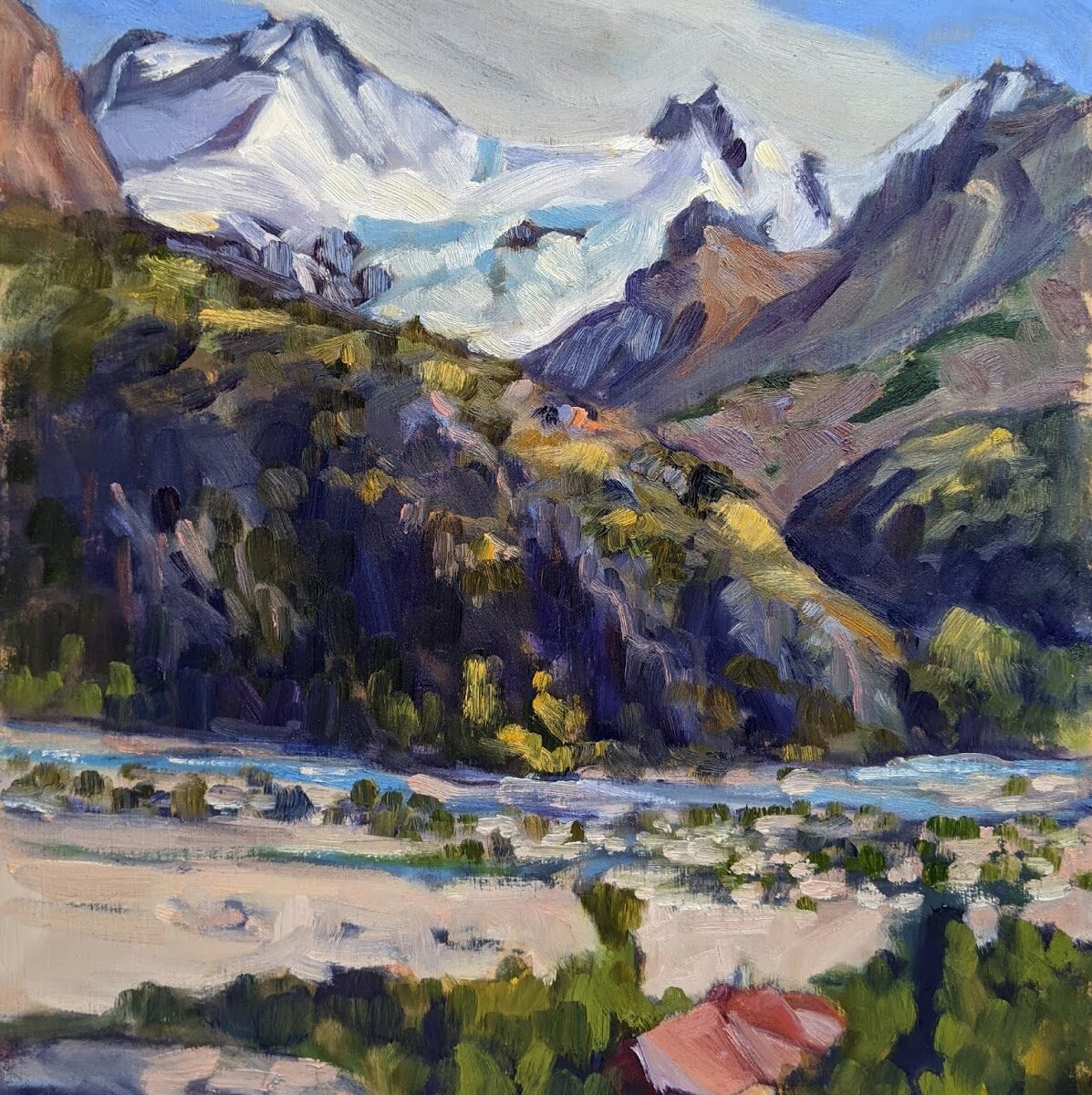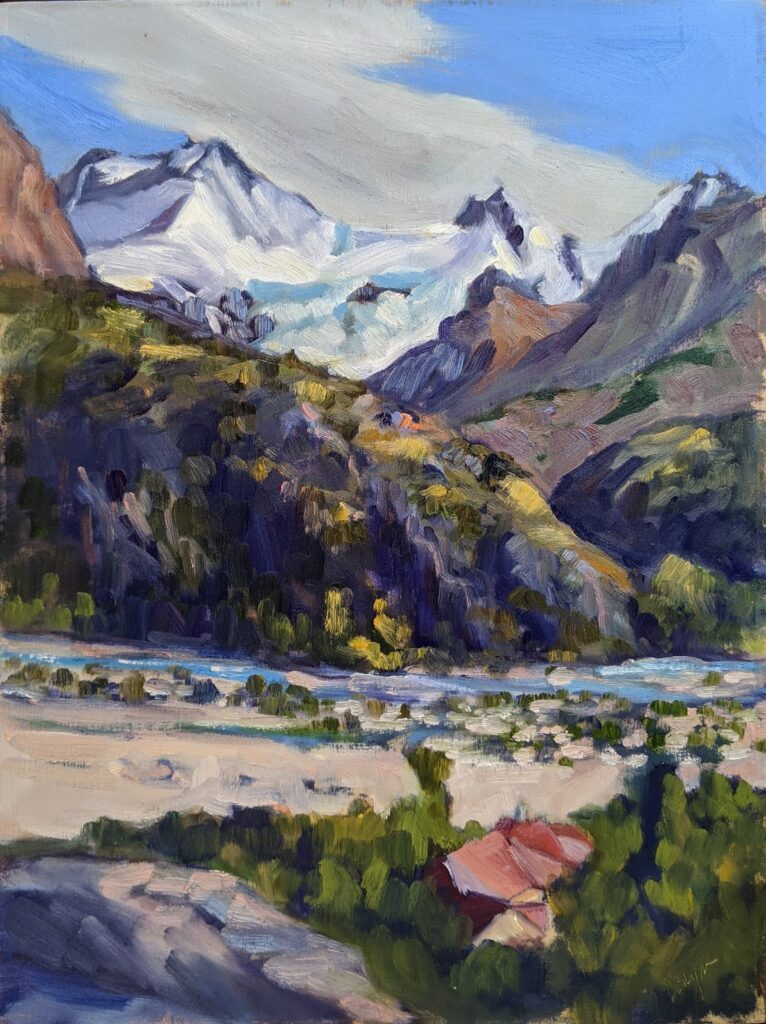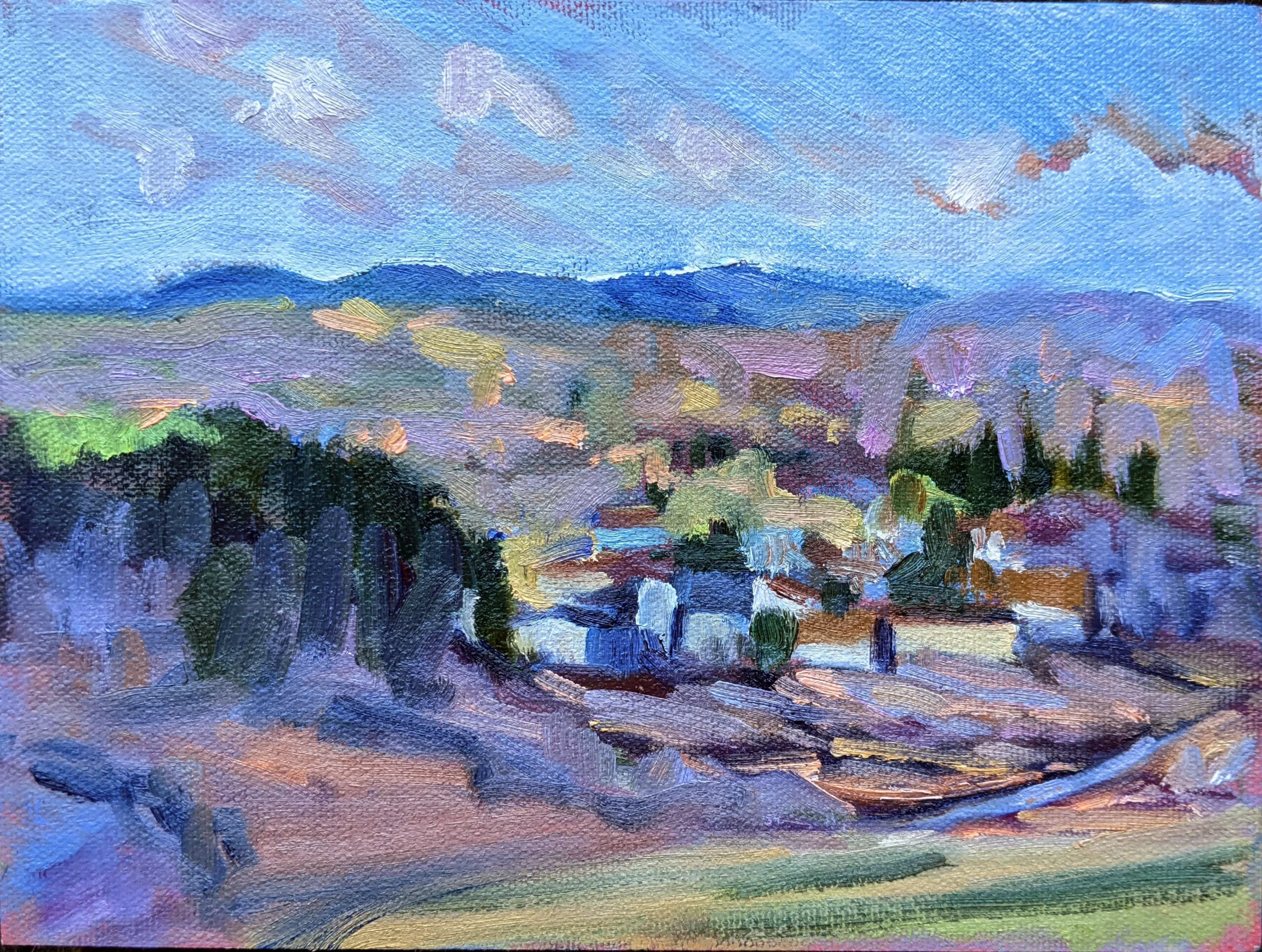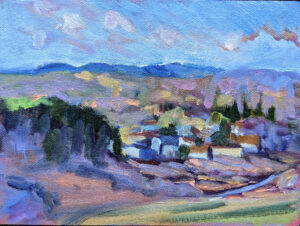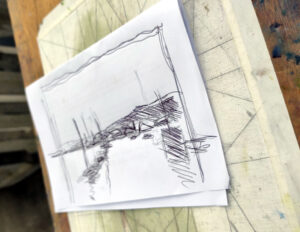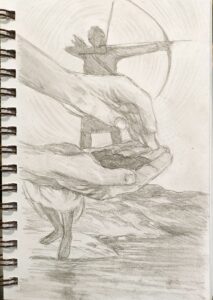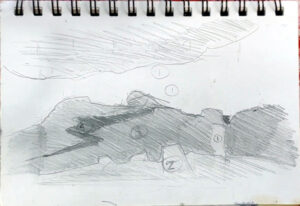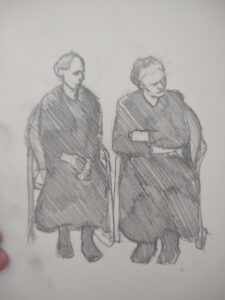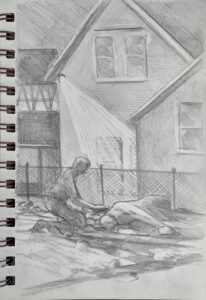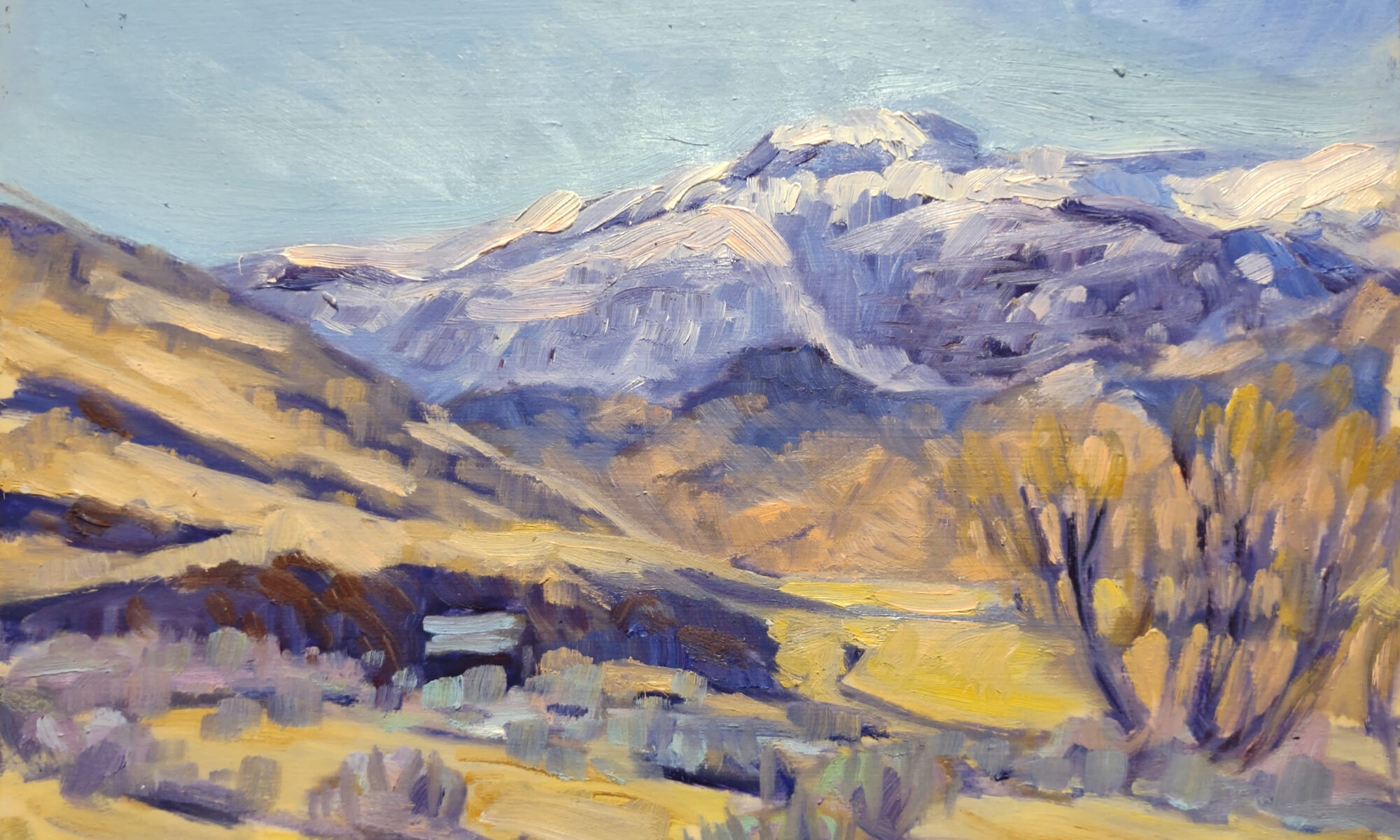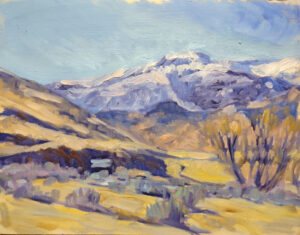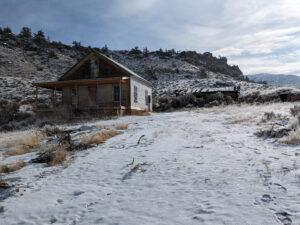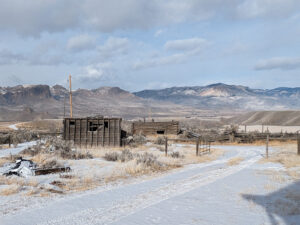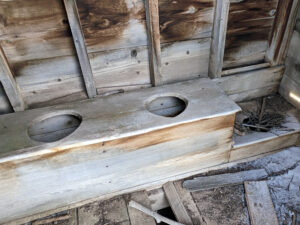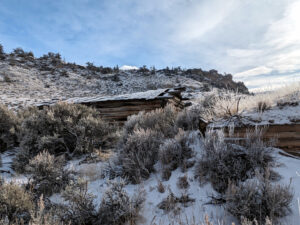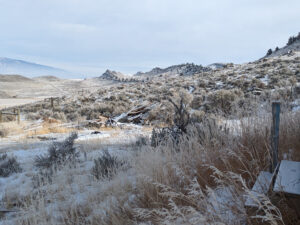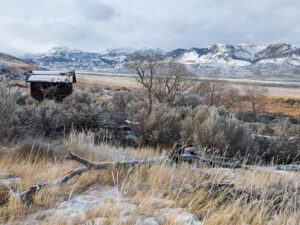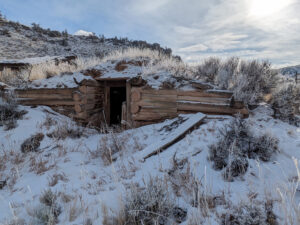Yesterday marked four years since we got home from our ill-starred trip to Patagonia, which just happened to coincide with the start of COVID. I’ve written about it starting here, and I don’t need to retell that awful and awesome adventure. However, struggling through spring snow yesterday reminded me of how anxious we were to leave El Chaltén as winter closed in on the southern Andes.
The Whole Enchilada was my second to last painting before we finally left the glaciers. My final one will remain forever unfinished because I was too ill with giardiasis to paint. Ironically, it’s taken four years to entirely clear that from my system, too. Last month, my PCP thought it was just possible that my gut symptoms were caused by my old parasite friend. Thankfully, it seems she was right. That’s one bad memory of Argentina that I can finally put to sleep.
This painting was done in the stupidest possible manner. After two weeks of looking at glaciers from river valleys, Jane Chapin, Kellee Mayfield and I climbed a mountain to get a different view. Being sensible outdoorswomen, we hared straight up the steep hillside. None of us had rappelling gear and we were suddenly in a maze of granite ridges.
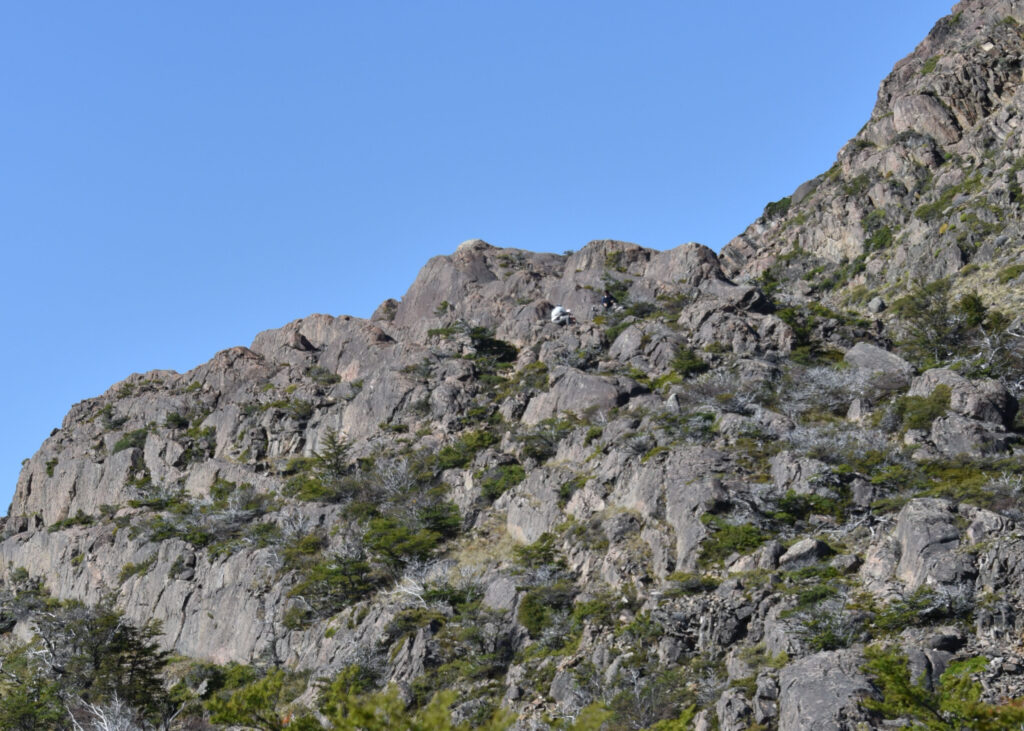
“If all your friends jumped off a cliff, would you, too?” is a famous parental question. Well, duh. Yes, obviously. Faced with a choice of being left behind or staying with your buddies, you soldier on. The good news is that none of us fell, even descending into a wicked headwind. The view from up above was sublime. We hunched down behind boulders as the wind increased in force. All of us painted well, although there can be no detail when your easel is bucketing in a fierce wind. It’s also hard to carry a wet canvas down a cliff when you’re worried about falling.
Argentina is a large and beautiful country, but the flip side is that I saw very little of it on our ill-fated trip. Will I go back? Certainly, especially if I can talk Jane into it. But not tomorrow, for sure. This winter has lasted long enough.
My 2024 workshops:
- Painting in Paradise: Rockport, ME, July 8-12, 2024.
- Sea & Sky at Schoodic, August 4-9, 2024.
- Find your authentic voice in plein air: Berkshires, August 12-16, 2024.
- Art and Adventure at Sea: Paint Aboard Schooner American Eagle, September 15-19, 2024.
- Immersive In-Person Workshop: Rockport, ME, October 7-11, 2024.

